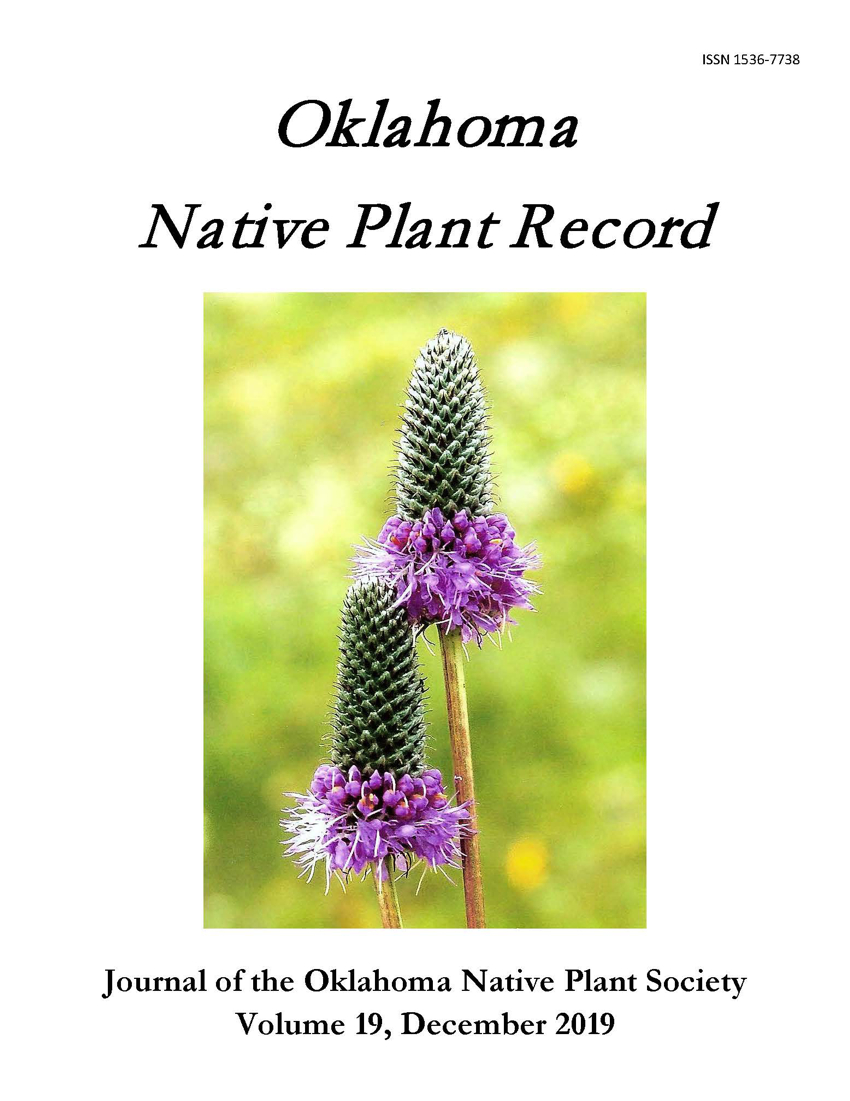Historical Land Cover Along the Deep Fork River: An Analysis of Vegetation Composition and Distribution of the Deep Fork National Wildlife Refuge, Okmulgee County, Oklahoma, Circa 1897
Main Article Content
Abstract
North American vegetation has been extensively modified by human activity. Restoring the landscape to past conditions is a strategy for species conservation, but this requires access to reliable data that describes those conditions. Here we use plat and bearing tree data collected during the Public Land Survey of 1897 (PLS) to describe the vegetation at the Deep Fork National Wildlife Refuge. We digitized five township plats and recorded data for all bearing trees. Of the six land cover types, forest (67%) and grassland (29%) were the most extensive. Surveyors recorded 708 individual bearing trees. Post oak (Quercus stellata Wangenh.) (199 stems), red oak (Q. rubra L.) (140), and blackjack oak (Q. marilandica Münchh) (92) were the most common trees. Some proportion of the trees identified as red oak were most likely black oak (Quercus velutina Lam.) and/or Shumard oak (Quercus shumardii Buckley var. shumardii). Eastern red cedar (Juniperus virginiana L.) was not recorded as a bearing tree but was recorded in the line notes. At the time of the PLS survey, the study area exhibited modification. Although the PLS began in Oklahoma in 1870, the Creek Nation was surveyed beginning in 1896.
Article Details

This work is licensed under a Creative Commons Attribution-NonCommercial-ShareAlike 4.0 International License.
Articles (c) The Authors
Journal compilation (c) Oklahoma Native Plant Society
Except where otherwise noted, this work is licensed under a Creative Commons Attribution-NonCommercial-ShareAlike4.0 International License, (CC BY-NC-SA 4.0) https://creativecommons.org/licenses/by-nc-sa/4.0/, which permits unrestricted use, distribution, and reproduction in any medium, provided the original work is properly attributed, not used for commercial purposes, and, if transformed, the resulting work is redistributed under the same or similar license to this one.

